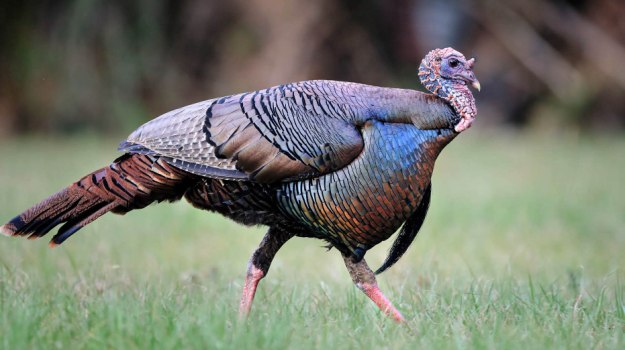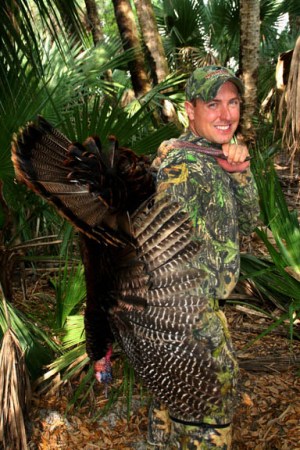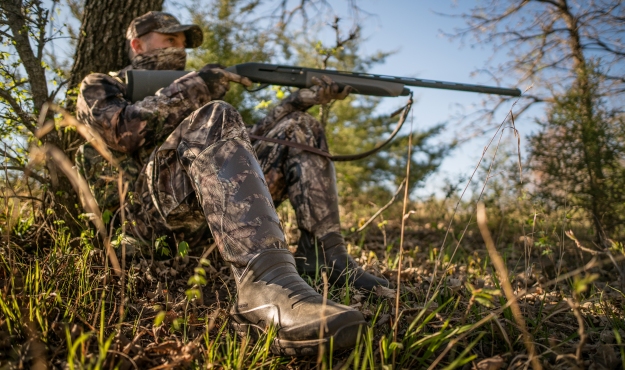When Hunting Osceola Gobblers - Take a Boatload of Patience with You

Editor’s Note: John O’Dell of Texas says he hardly can remember a day when he hasn’t been a Mossy Oak Pro. To kick off turkey season, O’Dell goes to south Florida to hunt the Osceola gobblers. “Florida has a youth hunt for Osceolas in late February,” O’Dell says. “Then, the season opens the first week of March.” The Osceola is usually the most difficult turkey for hunters trying to get a Grand Slam. The reason is not because the bird is extremely difficult to hunt. However, getting access to land where the Osceola lives can be difficult, but O’Dell has solved that problem too.
Florida homes three different subspecies of wild turkeys – the:
- Osceola gobbler - the turkey native to South Florida;
- hybrid turkey - a cross between the Osceola gobbler and the eastern gobbler; and
- eastern wild turkey found in north Florida
I believe the pure Osceola is more wary and pays closer attention to detail than any other species of wild turkey anywhere in the country. He roosts over water, because there are so many things on the ground that want to eat him. The Florida swamps have so many different predators in them that will love to have a turkey dinner from the time that turkey is a poult until he's an adult. For this reason, the Osceola is constantly on alert. Osceolas can’t tolerate any type of movement that they can’t identify immediately. If you normally set up to call an Osceola turkey at 100 to 150 yards from his roost tree, you very likely will be sitting in water. So, the real secret to taking an Osceola is not necessarily determining where he'll be roosting. Learning where he'll land and spend the day after he flies down from the roost is more important.
Hunting Osceolas is much like hunting a place to set-up a business. The key is location, location, location, location. To take an Osceola gobbler, you need to know where that turkey wants to be and get to that spot before he does. So, the first and most-important ingredient to a successful Osceola hunt is to scout, scout, scout and then scout some more for the location of the bird.
 The next challenge is how to hunt those turkeys in two different types of terrain – cattle pastures and swamps. Some Osceolas will spend all day in the swamps. So, you'll need knee-high rubber boots to keep your feet dry all day long. Osceolas who live near cattle pastures may roost over water, then fly out into the middle of that cattle pasture that may be 1,000 acres and spend the day in that pasture. In those big, improved pastures, you may be able to see plenty of turkeys, but getting close to them or getting them close to you may be pretty much impossible.
The next challenge is how to hunt those turkeys in two different types of terrain – cattle pastures and swamps. Some Osceolas will spend all day in the swamps. So, you'll need knee-high rubber boots to keep your feet dry all day long. Osceolas who live near cattle pastures may roost over water, then fly out into the middle of that cattle pasture that may be 1,000 acres and spend the day in that pasture. In those big, improved pastures, you may be able to see plenty of turkeys, but getting close to them or getting them close to you may be pretty much impossible.
If the turkeys are in the swamp, the vegetation is usually so thick that it’s very difficult for the turkey to hear you call to him. Because there is so much vegetation in the swamp, if you hear a turkey gobble, he may sound like he's 1/4- to 1/2-mile away. But realistically, he only may be 50 to 100 yards from you. Osceola turkeys are really not that much different from other races of turkeys in that hunting pressure, weather and the point they are at in the breeding season all influence how much and how often these turkeys gobble. When you're hunting in a pasture, you can see and hear a turkey gobble 1/4- to 1/2-mile away. But if you move in a swamp, when the turkey gobbles, it may sound like a whisper – a characteristic to which it’s often difficult to adjust.
Another problem with an Osceola on the limb is that he only may gobble two or three times just at daylight, and then be silent the rest of the day. Those turkeys have learned that the more they gobble, the more predators they will call to them. The places I’ve found that are best to hunt turkeys is a fresh burn or a field edge or to find a spot where turkeys want to go. To pinpoint turkeys, I look for tracks, droppings, feathers and strut zones. I attempt to identify the places that turkeys want to be, and I don’t spend a lot of time trying to find the roost tree. Then I’ll cut some palm leaves and create a blind or set-up a pop-up blind and wait on the turkeys to show up. When you're packing your turkey vest the night before the hunt, the most-important item that you can put in it is a boatload of patience, because sitting in a place where you find a lot of sign will pay more turkey dividends than fancy calling or running-and-gunning.
Tomorrow: How to Hunt a 1,000 Acre Cattle Pasture with John O’Dell
The weekly article series are written by John Phillips. To learn more about turkey hunting, check out John E. Phillips’ Kindle and print book, “Mossy Oak Pros Talk Turkey Tactics,” at http://amzn.to/1qZnffi and www.barnesandnoble.com. You also can download a free Kindle app that enables you to read the book on your iPad, computer or SmartPhone. For a free copy of John E. Phillips’ “The Turkey Gobbler Getter Manual,” go to http://johninthewild.com/free-books/ to download.






























